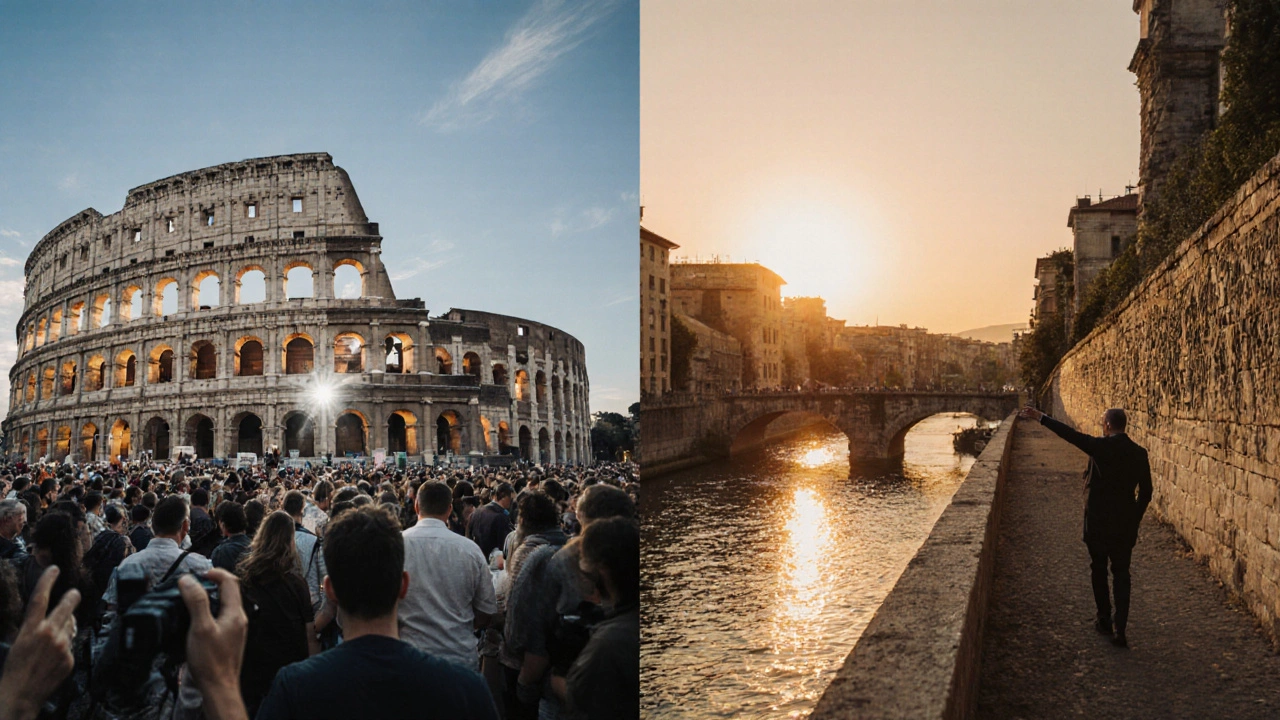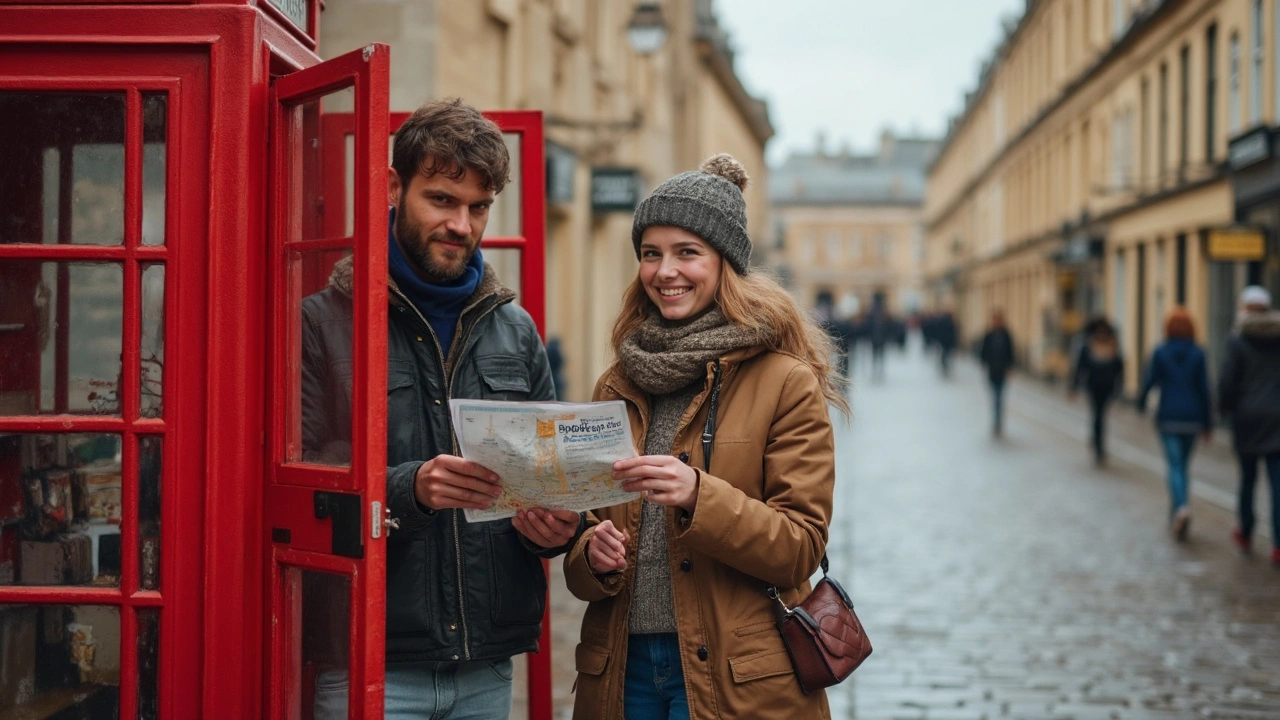Private Tours: The Best Way to Avoid Tourist Traps

Private tours are the most reliable way to skip crowded attractions, overpriced souvenirs, and fake cultural shows designed for tourists. If you’ve ever stood in line for hours at the Colosseum only to see a sign saying "Photo Op Here," or bought a "handmade" rug in Marrakech that came from a factory in China, you know how easy it is to get fooled. Private tours fix that by putting you in control-no group schedules, no pushy salespeople, and no forced stops at commission-driven shops.
Why Tourist Traps Exist
Tourist traps aren’t accidents. They’re businesses built on volume, not value. Companies pay tour operators big money to drop groups at specific spots-museums with inflated entry fees, jewelry stores that mark up prices 500%, or "authentic" dinner shows with actors reading from scripts. These places thrive because they target people who don’t know better. A 2024 study by the Global Travel Ethics Initiative found that 68% of group tour itineraries include at least one location where the operator receives a kickback. That’s not a coincidence. It’s a system.
Private tours break that cycle. When you book a local guide directly, their income depends on your satisfaction, not on commissions from gift shops. They want you to leave impressed, not annoyed. In Rome, a private guide might take you to a small family-run osteria where the nonna makes pasta using her grandmother’s recipe. That’s not on any Google Maps list. It’s not advertised. But if you ask the right person, they’ll know exactly where to go.
How Private Tours Work
A private tour isn’t just a smaller group. It’s a completely different experience. You pick the time, the pace, and the focus. Want to spend three hours in the Uffizi Gallery? Done. Want to skip the Vatican Museums entirely and explore hidden courtyards in Trastevere? That’s your call. No one rushes you. No one counts heads.
Most private tour operators work with certified local guides-people who live in the city, know its history, and have licenses to lead tours. In Kyoto, you might meet a retired tea master who shows you how to prepare matcha in a 200-year-old teahouse. In Lisbon, your guide could be a former fisherman who takes you to the oldest seafood market, where the stalls haven’t changed since the 1950s. These aren’t scripted performances. They’re real conversations with people who care about their culture.
The booking process is simple. You search for a guide on platforms like Withlocals, Viator, or local tourism boards. Look for guides with high ratings and detailed bios. Avoid anyone who lists "10 must-see spots" in their description. The best guides focus on stories, not checklists.
What to Look for in a Private Tour Guide
Not all private guides are equal. Here’s what separates the good from the great:
- Local expertise: They live in the city, not just visit it. Ask where they grew up or what neighborhood they recommend for dinner.
- Specialization: Do they focus on history, food, street art, or hidden alleys? Pick someone whose passion matches yours.
- Flexibility: Can they adjust the route based on your interests? A good guide will ask you questions before the tour even starts.
- Transparency: No hidden fees. The price should include everything-entrance tickets, walking routes, even a bottle of water if it’s hot.
- Reviews with detail: Look for reviews that say things like "They showed us a church no guidebook mentions" or "We ended up at a bakery only locals know." Generic praise like "Great tour!" means nothing.
In Barcelona, one guide I spoke with doesn’t even take clients to the Sagrada Família unless they specifically ask. Instead, he leads people to the Gothic Quarter’s secret staircases, where medieval graffiti still marks the walls. That’s the kind of insight you get when you skip the big-name operators.

Cost vs. Value
Yes, private tours cost more than group tours. A two-hour private walk in Paris might run $120-$180. A group tour? $30. But here’s the math: the group tour gets you 10 minutes at the Louvre, a 15-minute stop at a perfume shop, and a 20-minute wait for a croissant at a tourist café. The private tour gets you two hours with a former art historian who shows you the real stories behind the paintings-and takes you to a bakery where the croissant is made with butter from Normandy.
Think of it this way: if you’re spending $2,000 on a trip to Italy, spending $150 on a private tour isn’t an expense. It’s an investment in memory. You won’t remember the line at the Trevi Fountain. You’ll remember the old man in Florence who taught you how to pick the perfect gelato flavor by tasting three samples-and told you the story of his father’s bakery, closed since the 1980s.
Some operators offer half-day or full-day options. A full-day private tour in Rome, including Vatican access without the crowds, a lunch at a family-run trattoria, and a sunset walk along the Tiber, might cost $350. That’s less than a round-trip flight from Rome to Milan. And it’s the kind of day you’ll talk about for years.
Real Examples: Where Private Tours Make the Difference
Here’s what private tours unlock in five major cities:
- Paris: Skip the Eiffel Tower lines. A guide takes you to a rooftop garden in the 16th arrondissement with the same view-no crowds, no selfie sticks. Then they show you a tiny bookshop in Saint-Germain that’s been open since 1921.
- Tokyo: Instead of Shibuya Crossing with 10,000 people, your guide leads you to a quiet alley in Shimokitazawa where local artists sell handmade ceramics. You meet the potter. You taste matcha brewed in a 100-year-old teapot.
- Cairo: No overpriced camel rides near the Pyramids. Your guide takes you to a village 20 minutes away where Bedouin families still live the same way they did 100 years ago. You drink mint tea under the stars, not under a neon sign.
- Mexico City: Skip the chaotic street food stalls near Zócalo. Your guide brings you to a market in Coyoacán where a grandmother sells tamales wrapped in banana leaves, cooked over wood fire. She tells you how her recipe survived the revolution.
- Istanbul: No carpet shops with "last chance" deals. Your guide takes you to a 15th-century hammam where locals still go for Friday baths. You learn how the steam system was built by Ottoman engineers-and why the soap smells like rosewater.
These aren’t fantasy experiences. They’re real, bookable, and available to anyone willing to skip the package deals.

How to Book the Right Private Tour
Follow these steps to avoid scams and find the best guide:
- Search by city + "private tour" + your interest: Try "Kyoto private food tour" or "Rome private history walk." This filters out generic listings.
- Check reviews for specifics: Look for mentions of unlisted locations, personal stories, or spontaneous changes to the itinerary.
- Message the guide directly: Ask: "What’s one place you love in this city that most tourists never see?" If they hesitate or give a generic answer, move on.
- Confirm what’s included: Ask if entrance fees, transportation, and meals are covered. A good guide will list it clearly.
- Book 2-4 weeks ahead: Top guides fill up fast, especially in spring and fall. Don’t wait until you land.
Pro tip: Use local tourism websites. In Barcelona, visit Barcelona Turisme. In Kyoto, check Kyoto City Tourism. These sites often list licensed guides with verified reviews-no middlemen, no commissions.
When Private Tours Aren’t Worth It
Private tours aren’t for everyone. If you’re on a tight budget, traveling solo for just one day, or don’t care about deep cultural context, a group tour or self-guided walk might be fine. But if you’ve ever left a city feeling like you saw nothing but postcards, then private tours are your fix.
Also, avoid guides who promise "exclusive access" to places like the Vatican or the Colosseum. No private guide can bypass official lines. If they claim they can, they’re lying. Real guides work within the system-they just know the best times to go, the quietest entrances, and the hidden paths.
Final Thought: Travel Deeper, Not Just Further
Travel isn’t about checking off landmarks. It’s about connecting with places in a way that stays with you. Private tours don’t just help you avoid tourist traps-they help you find the real soul of a city. You’ll come home with stories, not just photos. With memories, not receipts. And that’s worth every dollar.
Are private tours really worth the extra cost?
Yes-if you value authentic experiences over crowded photo ops. A private tour might cost 3-5 times more than a group tour, but you get personalized attention, access to hidden spots, and no forced shopping stops. For many travelers, the difference between seeing the Colosseum from a bus and walking its tunnels with a historian who knows its secrets makes the price worthwhile.
Can I book a private tour once I arrive in the city?
You can, but you’ll have fewer options and higher prices. Top guides book up weeks in advance, especially in peak seasons. Booking ahead also lets you customize the tour based on your interests. If you wait until you land, you might end up with whatever’s available-and that’s often the least authentic option.
Do private tours include transportation?
It depends. Some include local transit passes or private car service, especially for half-day or full-day tours. Others are walking-only. Always ask upfront. If transportation isn’t included, clarify if you’re expected to pay for taxis or metro tickets separately.
How do I know a private guide is legit?
Look for licensed guides listed on official city tourism websites. Check reviews for specific details-like names of streets, local dishes, or historical facts. Avoid guides with only five-star ratings and no real stories. A good guide will have a few mixed reviews, but the detailed ones will show they know their stuff.
Can I do a private tour with kids or elderly travelers?
Absolutely. Private tours are ideal for families or travelers with mobility needs because they’re customizable. You can slow the pace, skip stairs, include breaks, and choose child-friendly stories. Many guides specialize in family tours or accessible routes. Just ask when booking.
Next time you plan a trip, skip the group bus. Book a local. Ask questions. Walk the back alleys. The city will show you its true face-if you’re willing to look beyond the signs.


Vikram Sinha
November 27, 2025 AT 03:33It's funny how we think we're 'avoiding traps' when really we're just swapping one kind of performance for another. The local guide telling you about their grandmother's pasta recipe? That’s still a curated story. The real truth is, every culture sells itself-whether it’s through a tourist shop or a ‘hidden’ teahouse that only opens for private tours. We’re not escaping the system. We’re just paying more to be let in on the backstage.